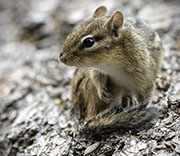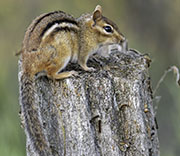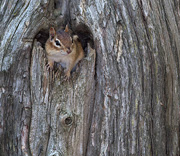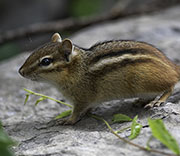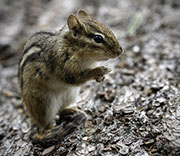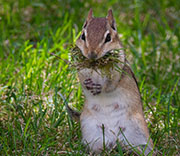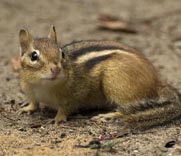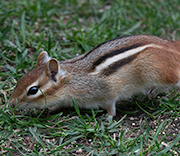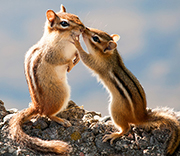
Eastern Chipmunk (Tamias striatus), Least Chipmunk(Tamias minimus)
Incredibly cute, incredibly friendly, the chipmunk has stole the heart of many campers and backyard nature lovers. It is fun to watch them with their boldness and busyness as they forage for food. Over the years, we have had many chipmunks live in our backyard and they have raised a few families on our small urban property. Every spring we wait for the first appearance of the year of our backyard buddies. They hangout under the bird feeders among the sparrows and doves, lapping up all the seeds that end up on the ground. The Eastern Chipmunk is the species that lives in our local area and the Least Chipmunk resides a bit further north.
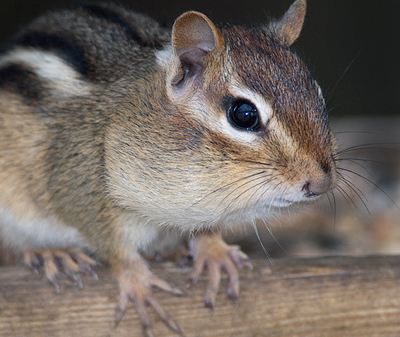 Although urban chipmunks appear to feed mainly on what they can get from the bird feeders, the truth is that they can feed on a wide variety of foods like seeds, fungi , grain, fruit, nuts, insects, worms, bird eggs and even nestling birds and baby mice. We have witness them catching and eating a live frog (not a pretty sight). They climb trees and bushes seeking out seeds and nuts.
Although urban chipmunks appear to feed mainly on what they can get from the bird feeders, the truth is that they can feed on a wide variety of foods like seeds, fungi , grain, fruit, nuts, insects, worms, bird eggs and even nestling birds and baby mice. We have witness them catching and eating a live frog (not a pretty sight). They climb trees and bushes seeking out seeds and nuts.
Chipmunks can swim too! While paddling our canoe, we noticed something small swimming in front of our canoe. Too small to be an otter or muskrat, too big to be a snake, we were a bit surprised to see it was a chipmunk crossing the river.
Although Chipmunks may appear very friendly to us, they are actually solitary creatures. They each have their own burrows and seldom associate with each other. They are not territorial and they do have overlapping home ranges. The males associate with females briefly during mating. Female care for the young and when the pups start to roam outside the den, we often see them playing together.
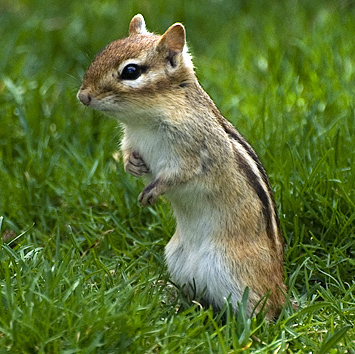 Chipmunks can be very vocal. When startled, it runs quickly along the ground giving a rapid series of loud chips and squeaks. Perhaps this startles predators, helping the chipmunk to escape. Chipmunks frequently call with a high-pitched chip repeated over and over at evenly spaced intervals of about a second, often made by a chipmunk watching an intruder from a safe vantage point.
Chipmunks can be very vocal. When startled, it runs quickly along the ground giving a rapid series of loud chips and squeaks. Perhaps this startles predators, helping the chipmunk to escape. Chipmunks frequently call with a high-pitched chip repeated over and over at evenly spaced intervals of about a second, often made by a chipmunk watching an intruder from a safe vantage point.
Chipmunks are gatherers. They gather nuts, berries, seeds, fruit, and grain which they stuff into their generous cheek pouches and carry to their burrow or nest to store. In late summer, they ramp up their collecting and gather seeds and other foods for storage as a supply of winter food.
Eastern and Least Chipmunks are not true hibernators, but experience torpor instead. They retreat to their burrows and enter periods of deep sleep. During the winter in their burrows, they wake and go back to sleep, repeatedly, waking every few days to raise their body temperatures to normal and feed on stored food rather than fat reserves.
In Canada, the chipmunk main breeding season is from mid-April to mid-May. In about 30 days, the female gives birth to 4 or 5 young and will raise them on her own. When they are four to seven weeks old, the young chipmunks begin to leave the burrow. The young grow rapidly and reach adult size before the end of summer.
Chipmunks have to be very careful and live in constant caution to avoid predation. Fortunately they are very quick and can retreat to the safety of their burrows. They can climb trees to avoid foxes and coyotes. Other predators include hawks, owls, weasels, bobcats, lynx, martens and snakes. As we witnessed first hand, Great Blue Herons will gladly dine on a chipmunk as well (we will spare you the photo). They also fall prey to domestic cats and dogs and a fair number are killed by automobiles.
Chipmunks can be seriously wounded when they compete among themselves or with larger foes, such as red squirrels, for food and space. Males fight among themselves when competing for females, and females will defend their nests against other chipmunks. We have seen many chipmunks with war wounds and stubby tails.
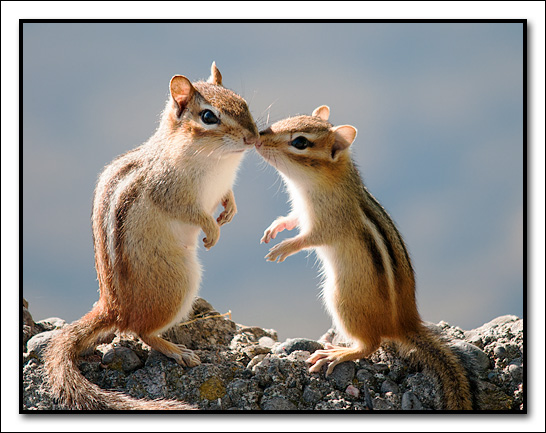
Female Eastern Chipmunks are dedicated mothers who stay with their young for up to seven weeks. The young are born blind and hairless. Their ears and eyes don't open for another month.
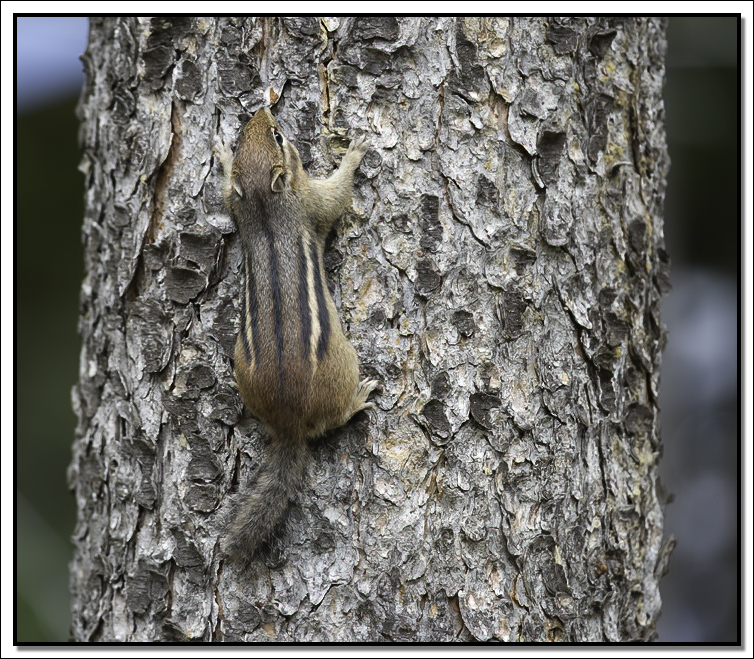
Chipmunks are very good climbers and can often be seen high in the trees gathering berries, seeds and nuts.
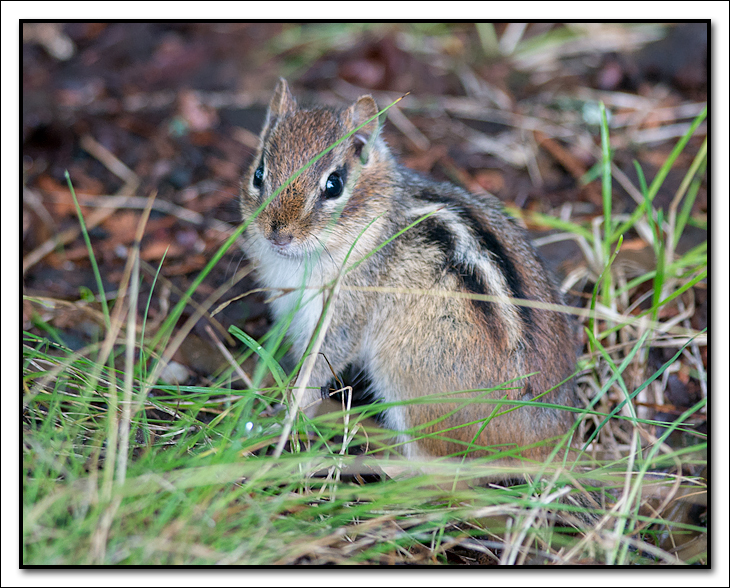
Least Chipmunks (picture above) are the smallest of all chipmunks. This little guy visited our campsite while camping on the north shore of Lake Superior.
